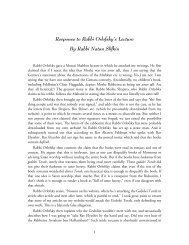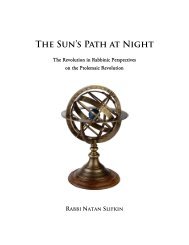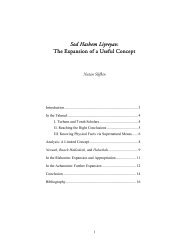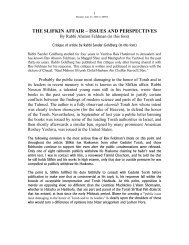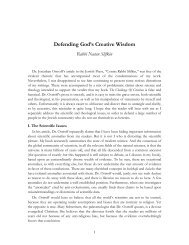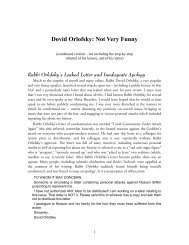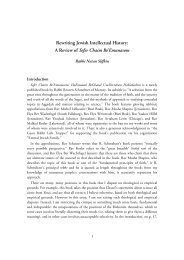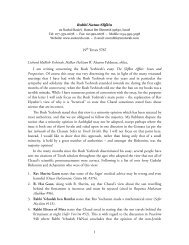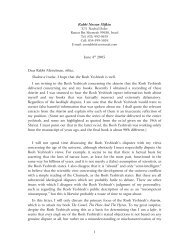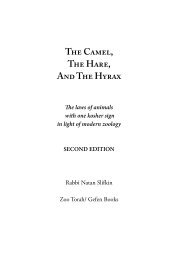Create successful ePaper yourself
Turn your PDF publications into a flip-book with our unique Google optimized e-Paper software.
OTHER ANIMALS46GORDON CONGDONHowever, other zoologists doubt this interpretationof the actions of the hyrax. They argue that hyraxes willwork their jaws from side-to-side when confronted withsomething new and potentially dangerous, as a threateninggesture. It is therefore suggested that all allegedobservations of the hyrax chewing its cud may in fact beobservations of a form of communication that has nothingto do with food. 41Those who conclude that the hyrax does not chew itscud are therefore faced with the question of why the<strong>Torah</strong> describes it as a ruminant. One approach to thisrelates to the hyrax’s internal physiology. The hyraxpossesses a somewhat ruminant-like gut, with threedistinct areas for digestion. 42 This in turn means thathyraxes take a long time to digest food, and are ableto process fiber efficiently, similar to a ruminant. 43According to some zoologists and rabbinic authorities,this internal digestive physiology is the basis for the<strong>Torah</strong> idiomatically describing the hyrax as chewingthe cud. 44Another approach is based on the fact that the lateral,gyratory chewing move ments of the hyrax’s jaws,resemble those of a cud-chewer. 45 Furthermore, likeruminants, hyraxes engage in chewing actions evenwhen they are not grazing. Superficially, then, a hyraxcertainly looks as though it is ruminating, and someexplain that the <strong>Torah</strong> therefore describes it as bringingup the cud. 46There are several ways of explaining the precise reasoningbehind this. One explanation is that these chewingmotions cause people to mistakenly think that the hyraxbrings up the cud, which is why the <strong>Torah</strong> had to mentionit. Another explanation is that since most animalsthat chew in this way are cud-chewers, the term “chewingthe cud” is used idiomatically to refer to all animals thatchew in such a way.Alternately, and perhaps preferably, usage can be madeof the principle that dibra <strong>Torah</strong> k’lashon bnei adam,“the <strong>Torah</strong> speaks like the language of men.” This phraseappears in numerous places throughout the Talmud andMidrash, in the rabbinic works of the medieval period,and in the writings of recent scholars, and its meaningvaries. 47 But according to several important rabbinicauthorities, it means that the <strong>Torah</strong> packages its messagesand laws within the scientific worldview of antiquity.48 Thus, since the hyrax appears to chew the cud andis commonly thought of as being a cud-chewer, the <strong>Torah</strong>describes it as such.



